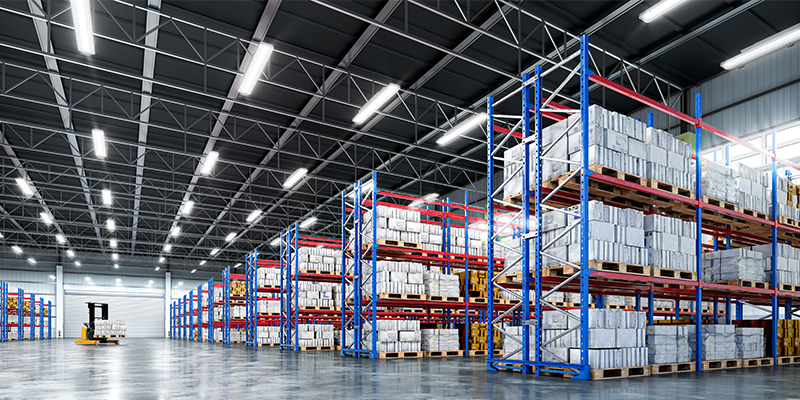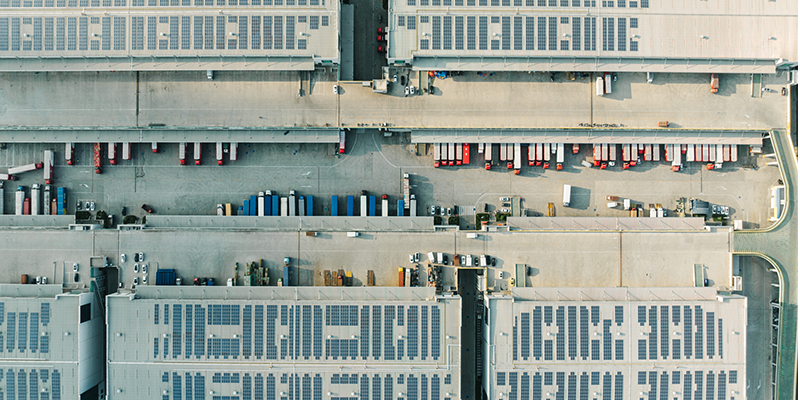By Brian Gallagher
Manufacturing facility construction is undergoing rapid evolution. As commercial real estate executives seek to align with manufacturers’ unique facility needs, understanding key construction trends and best practices is essential for project success. Predictability in cost, scope and schedule remains paramount for manufacturers, and achieving it requires a strategic approach built on early project definition, collaborative team integration and selecting the right project delivery method.
Understanding the Manufacturing Process: Aligning Construction with Operations
Manufacturing companies exist to produce goods efficiently, and their facilities must be designed to support and enhance their production processes. Before a project begins, it is critical to understand the manufacturer’s processes and workflow, equipment needs, utility requirements (primarily power and water), and material flow to ensure that the facility is built to optimize efficiency and productivity.
Real estate executives and project teams must work closely with manufacturing leadership to align facility design with operational needs. Whether it is a new greenfield facility or upfit to an existing building, nearly every manufacturing project has unique requirements. This includes considerations such as space planning for production lines, storage, logistics and worker movement. The facility should not just house the process – it should enhance it by enabling efficiencies, reducing inefficiencies, improving safety and allowing for future scalability.
By prioritizing an understanding of the manufacturing process in the planning phase, stakeholders can ensure the construction delivers a facility that is not just a structure but an integral component of project success.
Early Project Definition: Laying the Foundation for Success
For commercial real estate executives, early project definition is essential in ensuring alignment with manufacturing clients’ operational goals and financial considerations. Advanced manufacturing projects are becoming more complex and challenging with advances in automation and sustainability, as well as increases in demand for resources such as power and water. A well-defined project scope, schedule and budget mitigate risk, streamline resource allocation and prevent costly changes down the line. Understanding the site selection process, entitlements, zoning requirements, and infrastructure and resource availability early in the process enhances the ability to manage financial exposure and maintain project momentum.
This requires a rigorous assessment of project requirements, anticipated risks and constraints, and long-term operational goals. Early alignment among stakeholders leads to better budget management and informed decision-making, ensuring the project stays on track from inception to completion.
Collaborative Team Integration: Strength in Partnerships
The complexity of manufacturing projects necessitates early collaboration between developers, process equipment providers (specific comment on vendor information for design and equipment lead times), architects, engineers, and contractors. Bringing the right team together at the outset fosters seamless communication and collaboration, aligns project objectives and enhances overall efficiency. This integrated approach reduces design errors, accelerates the permitting process and ensures all parties have a clear understanding of project goals. When key players collaborate from the beginning, projects benefit from streamlined execution and fewer costly disruptions.
Selecting the Right Project Delivery Method
Manufacturing owners and commercial real estate executives must carefully evaluate project delivery methods based on risk allocation, financing structures and lease commitments. The choice of method – whether Design-Build, Design-Bid-Build, Construction Management at Risk (CMAR), Integrated Project Delivery (IPD), or Engineer, Procure, Construct (EPC) – plays a pivotal role in achieving predictable outcomes. Executives should also consider how delivery methods influence contractual obligations, procurement strategies and facility handover timelines to ensure alignment with tenant and investor expectations.
Each method offers distinct advantages in terms of speed, cost control, risk management and flexibility. The selection should be based on project complexity, owner preferences and team dynamics, ensuring the most efficient and cost-effective execution.
Understanding the Supply Chain and Resource Availability: Mitigating Risks and Delays
Supply chain challenges have become a critical factor in manufacturing construction, impacting project schedules and budgets. Understanding these constraints is vital in managing lease agreements, occupancy timelines and financial planning. Long-lead items such as switch gear, structural steel, specialty equipment and specialized equipment require early procurement strategies to confirm equipment lead times and prevent delays.
Partnering with Original Equipment Manufacturers (OEMs), vendors and suppliers from the outset helps ensure material and equipment availability and cost predictability. Proactively identifying potential alternatives and substitutions, and making early commitments for production time, for critical components can mitigate risks associated with fluctuating material costs and supply chain disruptions.
Securing essential resources such as power and water is becoming increasingly challenging due to growing demand, regulatory constraints and sustainability concerns. As industrial facilities expand to meet market needs, they must also navigate the complexities of energy availability, rising utility costs and water scarcity. Reliable access to these resources is critical for maintaining operational efficiency, minimizing downtime and ensuring long-term viability. Companies that proactively address these challenges by integrating sustainable energy solutions, optimizing water usage and investing in resilient infrastructure will be better positioned for success. Strategic planning and collaboration with utility providers, regulators and industry partners will be essential to overcoming these resource constraints.
The construction industry continues to face significant workforce challenges that must be understood before beginning a project. Skilled labor shortages, high turnover rates and an aging workforce can impact project timelines, quality and costs. Additionally, evolving safety regulations, technological advancements and the need for workforce training further complicate labor planning. Proactively addressing these challenges through strategic workforce development, partnerships with trade schools and investment in automation can help mitigate risks and ensure project success.
By integrating supply chain and resource management into project planning, stakeholders can better align construction schedules, reduce unforeseen delays and maintain cost control while keeping investors and tenants informed of potential risks.
Building for Long-Term Success
Successful manufacturing construction projects demand more than just delivering a building – they require a deep understanding of operations, early alignment of stakeholders, and proactive strategies to manage supply chain, resource and workforce challenges. By integrating thoughtful planning, collaborative partnerships and the right delivery methods, stakeholders can mitigate risks, control costs and ensure facilities are built to support long-term operational goals. This holistic approach transforms construction from a transactional process into a strategic advantage that drives efficiency, resilience and sustained success.
Read part 2 of this series: “Innovations Shaping the Future of Manufacturing Construction.”








